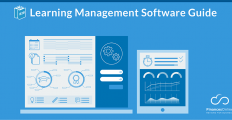Managing digital assets come with a lot of challenges that are often overlooked until they become real problems. One of the most critical issues in digital asset management is the lack of organized governance that can lead to unnecessary duplicates, forgotten data, or worse, loss or stolen assets. These problems cost companies time, effort, and money—all of which are completely avoidable with the help of a good digital asset management solution.
Different businesses, however, also have different requirements to effectively manage their digital assets. This only means that they need a digital asset management platform that allows them to modify its structure to fit their needs and their business ecosystem. This is where digital asset management software comes in. Open source DAM, however, offers more than just customization capabilities. In this article, we gathered the best open source digital asset management (DAM) software to give you an overview of what makes them the current leaders in this category.

Best Open Source Digital Asset Management Software Table of Contents
Among those involved in handling digital assets, no other people are more familiar with the pain points of the lack of effective digital asset management than marketers. According to a report on the state of digital assets management published by Brandfolder and Demand Metric, 51% of marketers agree that money is wasted on reproducing content they already have because they can no longer find it or they are not aware these contents already exist.
Between 2020 to 2022, the adoption of DAM software increased significantly, with nearly 88% of marketers and creatives agreeing that the COVID-19 pandemic played a significant part in their decision to switch to DAM solutions. Furthermore, marketers also attest that effective digital asset management increases productivity, and part of this is having the right tools in place.
Source: Brandfolder and Demand Metric, "The State of Digital Asset Management Research Report"
This growth in the adoption rate of DAM platforms offers a glimpse into what the future of digital asset management will be like. But while there is a broad range of the best DAM software solutions available in the market, a lot of them are proprietary platforms that leave little room for the expansion of functionalities to meet a business’s unique needs. If you are looking for a DAM solution that can accommodate your business’ digital asset management requirements, below is a list of open source DAM software you might be interested in.
Best Open Source Digital Asset Management Software in 2024
1. Cloudinary

Taking the top of our list is Cloudinary. This is a free enterprise-grade cloud-based solution that offers more than the capability to store and manage your media assets. Powered by intelligent automation technology, Cloudinary effectively streamlines workflows for marketing teams. These include automating the optimization of all rich media types, such as images, videos, GIFs, etc., to content delivery.
Creating variations of digital assets from a single source file is also part of the smart automation process, which greatly reduces the time and effort spent on the manual manipulation of various media content delivered on different platforms, channels, and devices. And while video assets require a more complex management process, Cloudinary simplifies this by utilizing a video API that comes with its own set of advanced tools. These include dynamic video transcoding, adaptive bitrate streaming, automatic quality compression, and the capability to embed your videos anywhere.
Locating the assets in Cloudinary is also a breeze with the help of its intelligent search feature assisted by AI-generated tags, structured metadata, and smart identification of different attributes, such as colors, faces, etc. You can also create custom collections of media content that you can easily share with other teams and users while maintaining control over their access to your content library. Furthermore, you can keep track of your media assets’ performance, usage, error reporting, and other analytics as these critical data are also automatically generated based on the information you need.
In terms of integration, Cloudinary makes this as less challenging as possible by having publicly accessible libraries that house APIs, development frameworks, documentation, and even customer support. As for how much Cloudinary services cost, the basic plan is completely free and premium plans start at $89 per month for a team of three users max.
Key Features of Cloudinary
- Image and video transformations
- Video transcoding and adaptive streaming
- Remote fetch and auto-backup
- Revision tracking
- Intelligent search
- Auto-tagging
- Role-based access and administration
- Analytics tracking and reporting
Detailed Cloudinary Review
2. Renderforest Video Maker

Next on our list is another free web-based solution for teams and businesses that need quick and easy ways to create professional-looking videos, especially for marketing purposes. Renderforest Video Maker is a user-friendly platform that enables users to create different types of videos, such as promotional, presentations, explainer videos, and even animations. To make video making easier and faster, you get access to thousands of pre-made professional video templates that you can easily modify to fit your needs. You also have the option to forego the templates and fully customize your video based on how you want it. You can either use your own images or video clips or find fitting media elements in the stock library of original clips and images. Furthermore, Renderforest Video Maker also has a selection of pre-licensed audio tracks that you can use as background music if you do not have your own.
With Renderforest Video Maker’s video editing tools, users can crop, rotate, and fit videos and images into widescreen, portrait, or square frames. Colors play an important role in a video’s visual appeal and with Renderforest Video Maker, you can create your color combinations or use any of the pre-created presets. And if your video needs a voiceover element, you can upload an audio or text file or record using the app’s advanced voiceover and text-to-speech feature. This feature also allows you to customize the voiceover’s language, accent, gender, and speed of narration.
Aside from its video creation and editing capabilities, Renderforest Video Maker also provides tools for website building and logo and graphic designing, among others. And while the web-based version is ideal when you are using a desktop, this software solution also has a dedicated mobile app for iOS and Android devices.
Pricing for Renderforest Video Maker’s premium plans starts are $9.99 per month, but you can always go for the free version first.
Detailed Renderforest Video Maker Review
Key Features of Renderforest Video Maker
- HD720 videos
- Pre-made video templates
- Licensed audio tracks
- Stock images and video clips
- Pre-made color presets
- Crop, edit, and fit images and video clips
- Advanced voiceover and text-to-speech
- Mobile apps
3. ImageKit

ImageKit is a cloud storage platform equipped with advanced media asset management capabilities. This open source DAM software is designed to be user-friendly with its browser-based interface that allows you to simply drag and drop images, videos, documents, and other files. Organizing your media content and other files can be as easy as renaming and moving them into folders. You can also add customized tags and metadata that you can use in the advanced search function to easily locate the digital asset you need.
Beyond digital asset storage and organization, ImageKit comes with built-in media transformation tools that enable marketers to deliver fully optimized media content for the web and other channels. These include automatic format and compression kits, as well as versioning tools that ensure you are using the correct version, letting you locate and retrieve the previous versions of your media content. Furthermore, ImageKit enables users to easily share and distribute videos and images via ready-to-use URLs.
As among the best open source digital asset management (DAM) software solutions around, ImageKit is also designed for team collaboration. It eliminates the need for third-party chat and email platforms as ImageKit allows users to add comments on the media assets they are working on. And if you are the administrator of the account, you can control the access levels of other users as part of safety measures to mitigate security risks common with SaaS.
As a digital asset management system open source free version, it provides users with 20GB bandwidth and 20GB media storage. And if upgrades are needed, premium plans start at $49 per month.
Detailed ImageKit Review
Key Features of ImageKit
- Browser-based UI
- Custom tags and metadata
- Automatic image and video optimization
- Media library and backup with search
- Automatic image performance analysis
- Video processing units
4. OpenText DAM

OpenText DAM is a powerful enterprise content management platform that offers digital asset management for systems, applications, and products or SAP solutions. As a DAM system, OpenText serves as a single source of truth for all types of media or digital assets. Like other DAM systems, OpenText is designed to help improve efficiency not only in media management but also in supporting content sharing and collaboration within the SAP ecosystem.
Among the features of the OpenText DAM solution are its capability to simplify the capture, management and distribution of all types of media assets. It can also automate workflows to eliminate repetitive manual tasks and reduce manual errors. Locating digital assets is also often a headache among marketers and creatives, but OpenText addresses this problem by offering extensive search tools. These include simple to multi-term keyword searches, adaptive facets, templates, and product master data, among others. Furthermore, you can also build your own metadata model using pre-built templates. And when it comes to integration capabilities, OpenText works well with SAP Commerce Cloud, Marketing, and Business Suite. And as an open source solution, OpenText enables its users to leverage its APIs in extending and customizing the platform’s functionalities.
Unlike other open source DAM software, OpenText does not have a completely free version, but you can take advantage of its 90-day free trial. The premium plans start at $12 per pack for OpenText’s storage service and $3,000 per 1 million APIs.
Detailed OpenText DAM Review
Key Features of OpenText DAM
- Supports all file types
- Advanced media search tools
- Automated workflow and collaboration
- Pre-built metadata model templates
- User access/permission control
5. Nuxeo Platform

Nuxeo Platform is an enterprise-grade DAM solution popular among consumer packaged goods and retail, financial services, and media and entertainment companies. Leveraging the power of AI technology via Nuxeo Insight, this digital asset management software open source platform offers sophisticated content management tools that enable you to automatically extract metadata from your digital assets. This allows you to effectively classify your documents and rich media content, making them easy to locate using Nuxeo Platform’s intelligent search feature. Furthermore, using the metadata, the Nuxeo Platform enables you to automate various processes, such as image capture and workflows, and also automatically associate specific digital assets with tasks and assignments.
What makes the Nuxeo Platform even more idea is its provision of a low-code platform that enables users to deploy and train machine learning models designed to further improve digital management processes. This functionality is designed to be easy enough to use for users who do not have advanced knowledge of the machine learning framework. Furthermore, you can extend the Nuxeo Platform’s capabilities by integrating it with various applications, such as Google Vision, Amazon Recognition, Comprehend, and SightEngine, among others.
Nuxeo Platform’s pricing plans are only available upon consultation and request.
Detailed Nuxeo Platform Review
Key Features of the Nuxeo Platform
- Nuxeo Insight
- Upload and enrich
- DAM process flows
- Enterprise search
- Digital publishing
- Collaboration
- Low-code ML model builder
6. Pics.io

Pics.io enables teams and businesses to create a centralized hub for all types of digital assets whether on top of Amazon S3 or Google Drive or set it up as a dedicated DAM platform with its own storage. Leveraging in-depth metadata management, Pics.io makes it easy for users to find specific digital assets using keywords and other custom attributes automatically generated via advanced processing of standard metadata.
Pics.io’s metadata management also enables businesses to enhance team collaboration by automating workflows, which include digital asset assignment, asset delivery, and approvals, among others. Furthermore, Pics.io provides users with complete visibility over asset versions down to minute details, such as revisions and comments. And if the associated details are not enough for you to determine which version you intend to use, Pics.io has a visual comparison tool that allows you to compare different versions of a media asset side by side.
This software solution’s integration capabilities is one of its strength. Pics.io can seamlessly integrate with a broad range of third-party solutions, such as Adobe Suite, Shopify, Slack, Zapier, and compatible mobile applications. As for its price, the most affordable plan costs $18 per month for every user and $12 per month per website.
Detailed Pics.io Review
Key Features of Pics.io
- In-depth metadata management
- Quick search
- Version control
- Workflow automation
- Team collaboration
- Analytics and reporting
7. pCloud

pCloud positions itself as the most secure cloud storage, making it a trustworthy software solution where teams, businesses, and even private individuals can safely store confidential digital assets. With the help of pCloud Crypto, which is also considered to provide the highest level of cloud encryption, your sensitive files are not only fully protected in the web application but also across all devices.
As with many SaaS tools, digital asset management is part of pCloud’s robust business solutions that provide businesses with cutting-edge tools to upload, store, organize, and share media assets. pCloud allows users to upload images and other media types, from desktops, mobile devices, cameras, hard drives, and even directly from servers. And while other cloud storage and DAM solutions have file size limits, pCloud ensures that you can smoothly and safely upload and download any media or content regardless of how large it is. Other features pCloud offers include file management and sharing capabilities, as well as file versioning. Furthermore, you can use pCloud as a computer backup for your Mac folders and files and keep a copy of deleted files and content versions for up to one year.
You can get pCloud by signing up for an annual subscription plan priced as low as $59.88, or by purchasing one of the lifetime plans that start at $570.
Detailed pCloud Review
Key Features of pCloud
- Collaboration
- Security
- File versioning
- Data recovery
- Remote upload
- Automatic sync
- Unlimited file size and speed
8. DaCast

Formerly vzaar, this video hosting platform has expanded its functionality and scalability after getting acquired by Saas online video hosting and streaming platform DaCast in 2019. Now rebranded to reflect the name of its new parent company, DaCast gets enhanced video management functionalities and other new features, such as the capability to live-stream and monetize content.
DaCast’s advanced video content management system enables its users to efficiently upload multiple videos simultaneously with the help of its S3 FTP upload feature. With the help of video APIs, you can create custom workflows to automate both the management and delivery of your video content. You can also add an unlimited number of categories and subcategories to make sorting and keeping track of your videos easier.
As one of the best open source digital asset management (DAM) software around, this DaCast comes with a built-in video transcoder that automatically prepares your videos for adaptive bitrate streaming, which keeps the quality of your video content at the most optimum level. DaCast’s transcoding tools also ensure that your videos are compatible with any device. Furthermore, DaCast leverages HTTPS protocol and AES video encryption technology to ensure that your videos and associated sensitive information are strongly protected.
You can get DaCast for as low as $39 per month, billed annually. This plan offers 50GB of storage and up to 1.2TB of bandwidth per year.
Detailed DaCast Review
Key Features of DaCast
- Online video hosting
- Multiple video uploads
- Video transcoding
- Embed videos
- Secure video upload and hosting
- Online and mobile streaming
- Built-in paywall and advertising
9. CONTENTdm

A product of OCLC, CONTENTdm is a dedicated digital asset management solution designed to build, showcase, and preserve digital assets. CONTENTdm provides integrated tools that enable users to create a digital library website that reflects their brand. These tools are easy enough to use and do not require advanced programming skills for users to add up to three custom functionalities to their digital library. These include branded look and feel, map-based browsing, and embedding videos and other rich media types. CONTENTdm allows for the easy publishing and sharing of your content anywhere in the world and across different types of devices.
CONTENTdm ensures that the different versions of your digital content are well-preserved and secured in its preservation archive. This is a cloud-based environment built specifically not only to secure copies of your digital assets but also to make sure they are functioning as intended. This is done through rigorous file inspection that newly uploaded content goes through and the automated health checks conducted periodically to ensure that every file in the system is in top shape. Users also receive regular updates on their digital content’s health records.
In terms of integration capabilities, CONTENTdm API enables users to seamlessly integrate with various web apps, such as WorldCat, content management systems like WordPress, Google Maps and Analytics, and leading shopping solutions, among others. Pricing plans for this DAM software open source platform are only available upon request.
Detailed CONTENTdm Review
Key Features of CONTENTdm
- High-volume workflow
- IIIF API support
- Metadata templates
- Built-in editing tools
- Content embedding
- Website/digital library customization
- Long-term digital content preservation
10. Pimcore

Pimcore is a free enterprise digital asset management solution that can be deployed in the cloud or on-premise. As open-source software, Pimcore enables businesses to take full control of their digital assets and customize their DAM platform in a manner that meets their organizations’ requirements. This DAM solution provides all the essential tools for managing digital content, such as file management, metadata management, enterprise metadata, and image and video conversion.
Digital asset sharing and collaboration with other teams and organizations are made easier through Pimcore’s asset experience portal or by integrating it with the Microsoft Office and Adobe Creative Cloud apps. And when it comes to streamlining the digital asset management process, Pimcore provides users with a sophisticated workflow engine. This workflow engine enables users to design flexible and highly configurable workflows, even those without coding skills and knowledge.
As for how much it costs, Pimcore’s community edition is completely free. The pricing plans for its cloud and enterprise editions are only available upon request.
Detailed Pimcore Review
Key Features of Pimcore
- File management
- Supports all file types
- Metadata management
- Enterprise metadata
- Image and video conversion
- Workflow management
- Digital asset delivery
- Asset experience portal
- Band hub and asset sharing
- Pimcore direct edit
11. Salsify

Salsify combines the core functionalities of digital asset management and the best product information management systems to help online retailers deliver quality engaging shopping experiences. Its PIM solution leverages a flexible data model that enables retailers to streamline the process of importing data and identifying information that needs to be uploaded or modified.
This software solution also provides all the necessary tools to help retailers automate data management workflows, as well as provide them with a secure space where they can centralize all data and digital assets. In this way, users also get a centralized view of all content versions, validated data, etc. Salsify also offers content enrichment, which allows retailers to collect high-quality data, including rich media, different types of marketing content, regulatory information, and product attributes. And via API, users can extend Salsify’s functionalities, especially in the areas of product experience and supplier experience management.
Salsify’s pricing information is only available upon request.
Detailed Salsify Review
Key Features of Salsify
- Flexible data model
- Manage end-to-end data lifecycle
- Data management workflow automation
- Multi-tenant architecture
- Developer hub
12. UbiCast

A video content creation and management platform, UbiCast specializes in helping corporate and academic organizations create engaging elearning content, as well as broadcast business conferences. The platform offers intuitive tools, such as Miris Capture, which enables users to simultaneously record both the webcams and their screens. The system intelligently identifies the presentation and speaker, which helps deliver a dynamic viewer experience as the latter can choose to highlight either the speaker or the presentation on their end. All videos recorded are also automatically imported and indexed, converting the videos to the format and quality supported by the device where videos are being viewed.
Beyond its smart video capture, recording, and delivery features, UbiCast also provides built-in editing tools that allow users to trim, edit, and add custom elements, including logos, attachments, links, and interactive exercises. UbiCast also makes sharing videos easy via email or top LMS platforms. Users can also control the visibility of shared videos by making them available to the public or adding passwords. Moreover, administrators can limit user access to video content and other tools. In terms of integration, UbiCast leverages HTTP API to help users to create custom connectors to integrate the platform with third-party applications of their choice.
UbiCast offers its service on a quote basis, so you have to contact the vendor for more information about its subscription packages.
Detailed UbiCast Review
Key Features of UbiCast
- Lecture capture
- Multi-camera recording
- Interactive videos
- Automatic video conversion
- Video customization
- Interactive polls and quizzes
- Large-scale live streaming
- Viewing statistics
13. Bynder

Bynder is another powerful digital asset management solution that serves as a dynamic single source of truth for marketing teams. This platform comes with intuitive tools to keep all digital assets organized in one location. Bynder offers an intelligent filter structure that enables users to easily categorize and find digital assets faster. Users can also share files internally and externally and set usage restrictions at the same time in terms of usage, access expiration date, and even keep track of sharing history.
This DAM solution also automatically optimizes digital assets through its integrated Dynamic Asset Transformation tool. This eliminates manual media asset editing, such as batch image resizing, to create multiple versions of media assets fully optimized to deliver quality customer experience. Furthermore, Bynder enables marketing teams to automate content distribution to websites and other endpoints. Aside from its ready-to-use tools, Bynder also offers add-on modules to further extend its functionalities.
Bynder’s pricing details for its digital asset management platform are available upon request.
Detailed Bynder Review
Key Features of Bynder
- Centralized content repository
- Intuitive search and filtering
- File-sharing
- Access management and permissions
- Content workflow
- Dynamic asset transformation
- Automated content delivery
14. ResourceSpace

ResourceSpace is a highly configurable digital asset management platform that enables users to tailor both the appearance and user experience down to minute details that suit their business needs and requirements. Some of the features ResourceSpace offers include customizing its interface to match your brand, such as choosing your colors and layout and adding header images.
Aside from its robust customization capabilities, ResourceSpace is also equipped with advanced tools that streamline digital asset management processes. These include the automated image tagging capability that leverages AI to identify elements in the image that prompt appropriate keyword suggestions. This function also helps in locating digital assets faster along with the other filters included in the comprehensive search tool.
ResourceSpace also gives users visibility and control over media asset versions. Administrators can set restrictions on users who can view and modify digital assets, as well as revert the actions made on the file itself. And in order to ensure that your content will be delivered fully optimized to different channels, ResourceSpace automatically transcodes every uploaded file into specific file formats, DPI, resolutions, and required bit rates.
As an open source software solution, ResourceSpace integrates seamlessly with your existing systems, including single sign-on, video-sharing platforms, CMS solutions, and others. As for how much this DAM software costs, the cloud-based version is free but you can upgrade to any of the premium plans whose price starts at $338 per month. The on-premise version, on the other hand, starts at $499 per month.
Detailed ResourceSpace Review
Key Features of ResourceSpace
- Custom branding
- AI and metadata
- Digital asset sharing
- Workflow and versioning
- Automatic conversion
15. Xinet

A product by IgniteTech, Xinet is a sophisticated digital management solution equipped with powerful production and workflow automation for creative teams. Workflow customization covers adding custom triggers and actions, including reviews and approval. Version control can also be automated, which helps eliminate manual validation and allows creative teams to focus on more urgent tasks. Aside from its robust workflow customization capabilities, Xinet also provides users with built-in tools to create and edit digital assets directly within the platform.
As an open source digital asset management software, Xinet also offers project management functionalities, such as project monitoring and insights into the potential roadblocks a project might encounter, giving the team enough time to make adjustments, come up with possible resolutions, as well as room for improvement. And when it comes to integrations, Xinet can fit easily with existing workflows using the Adobe CC plugin or mounted drives.
As for its pricing information, this detail is only available upon request.
Detailed Xinet Review
Key Features of Xinet
- Workflow automation
- Asset versioning
- Version control
- Customizable metadata
- Customizable interface
- Visual file search
Choosing the Right Open Source DAM Software
Now that we have narrowed down your options for the best open source digital asset management solutions, choosing the right one for you and your business is the next crucial step. It is important to note that while Cloudinary is on the top of the list—and for good reasons, there is still the possibility that it might not fit with your business’ asset management requirements. This why it is important to explore and understand the range of customizations and other functionalities offered to make sure that the DAM solution you want to use can be tailored exactly to your business needs. In case you would like to explore other options, you can check out our list of this year’s best digital asset management tools.
Key Insights
- Critical Importance of Governance: Effective governance is essential in digital asset management (DAM) to avoid issues like duplicates, forgotten data, or loss of assets, which can cost companies time, effort, and money.
- Customization Needs: Different businesses have unique requirements for managing their digital assets, necessitating customizable DAM solutions that can adapt to their specific needs and ecosystem.
- Adoption Growth: The adoption of DAM software has significantly increased, with 88% of marketers and creatives attributing this shift to the impact of the COVID-19 pandemic, which has highlighted the need for efficient digital asset management.
- Efficiency and Productivity: Effective digital asset management is crucial for increasing productivity and ensuring that existing content is utilized effectively, thus preventing unnecessary reproduction of assets.
- Open Source Solutions: Open source DAM software offers flexibility and customization capabilities, making them ideal for businesses with unique digital asset management needs.
FAQ
- What is digital asset management (DAM) and why is it important? Digital asset management (DAM) is the practice of organizing, storing, and retrieving rich media and managing digital rights and permissions. It is important because it helps organizations efficiently manage their digital content, ensuring easy access, proper use, and security of digital assets.
- How does a lack of effective governance impact digital asset management? A lack of effective governance can lead to issues such as duplicate files, forgotten or lost data, and even stolen assets. This can result in wasted time, effort, and financial resources for companies.
- Why has the adoption of DAM software increased significantly in recent years? The adoption of DAM software has increased significantly, particularly due to the COVID-19 pandemic, which highlighted the need for efficient digital asset management as more businesses shifted to digital operations and remote work environments.
- What are some key features to look for in a DAM solution? Key features to look for in a DAM solution include image and video transformation capabilities, intelligent search functions, metadata management, version control, workflow automation, collaboration tools, and robust security measures.
- What advantages do open source DAM solutions offer? Open source DAM solutions offer advantages such as customization capabilities, flexibility to meet unique business needs, cost-effectiveness, and the ability to integrate with various third-party applications.
- How can effective DAM increase productivity? Effective DAM increases productivity by streamlining the organization and retrieval of digital assets, reducing time spent searching for files, preventing the unnecessary reproduction of content, and ensuring that digital assets are used efficiently and effectively.
- What are some popular open source DAM software options? Popular open source DAM software options include Cloudinary, Renderforest Video Maker, ImageKit, OpenText DAM, Nuxeo Platform, Pics.io, pCloud, DaCast, CONTENTdm, Pimcore, Salsify, UbiCast, Bynder, ResourceSpace, and Xinet.
- How do DAM solutions support collaboration among teams? DAM solutions support collaboration by providing centralized access to digital assets, allowing team members to easily share files, add comments, automate workflows, and manage version control, thus enhancing teamwork and productivity.
- What should businesses consider when choosing a DAM solution? Businesses should consider their specific digital asset management needs, the level of customization required, integration capabilities with existing systems, ease of use, security features, and the cost of the DAM solution.
- Can DAM solutions help in content delivery and optimization? Yes, many DAM solutions offer features like dynamic asset transformation, automated optimization of media content for different platforms, channels, and devices, and tools for efficient content delivery to ensure high-quality user experiences.
























Leave a comment!